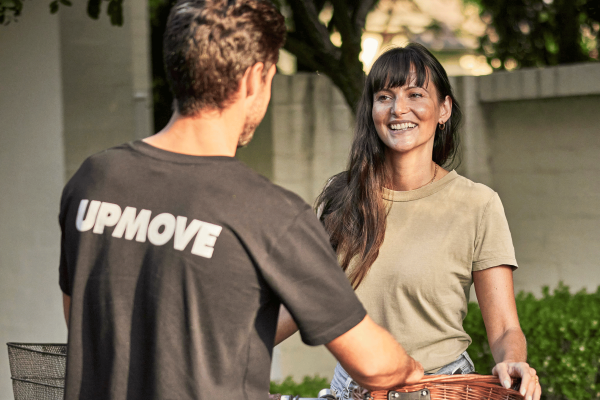6 Downsides to consider before moving to Australia

Year-round sun, sandy beaches, rich cultural heritage, and an adventure in every state; what’s not to love about living in Australia, right?
While Australia is certainly a land of opportunity for many, it’s not all surf vibes and ‘no worries livin’. In fact, if you’re planning a move to Australia and haven’t done your homework, you could find yourself wishing you’d never got on the plane.
In this article, we’ve got the Aussie dream reality checks that will help you make an informed decision about where you want to live.
1. Cost of living
It’s no secret that the cost of living around the world is on the up and Australia is no exception. In fact, the land down under is ranked more expensive than in 87% of countries across the world.
With costs higher than average, a secure and well-paying job is essential to making the most of life in Australia. It’s estimated that an annual income of $70k—$80k would support a single person living outside of the major cities.
But what are the job opportunities really like in Australia?
And how much do they pay?
2. Job opportunities in Australia
While Australia has typically had low unemployment and has historically had more jobs than candidates to fill them, there appears to be a swing in the other direction—particularly for those with barriers to work or who are re-entering the workforce after a long period of time.
For those families and individuals planning a move to Australia, it’s worth considering:
- The current demand for jobs in your profession
- The availability of jobs in the location you are considering
- The average salary for the type of jobs you would apply for
As a guide, careers in medical specialisms, finance and engineering are among the top-paying professions in Australia, with salaries ranging from $164,000 to $394,000 per annum.
3. Housing
Living in Australia can come with a hefty price tag when it comes to property prices in the major cities. According to Core Logic Data, Sydney is the most expensive city in the country, with an average median house price of $1.19 million, followed by Brisbane at $890,746.
Rural or more remote regions offer lower-cost options but come with a level of isolation.
If you’re used to city living, the cost of housing in Australia is definitely a big point of consideration before you make a move.
4. Extreme weather
Australia is definitely a land of extreme weather conditions. The country experiences temperatures that get up to 40°C in some of the western and central desert regions to below-freezing levels in some of the country's southeastern areas.
Depending on where you are, you can expect dry heat, extreme humidity, torrential rain and even snow. Cities such as Melbourne are infamous for having all weather in one day. So, if you prefer weather, you can set your clock by, this may not be the spot for you. Check out our guide of which Aussie cities have the best weather.
Record temperatures in Australia
|
Record temperatures |
Place |
Temperature (°c) |
Date |
|
Highest recorded temperature |
Oodnadatta, South Australia |
50.7°C |
1960 |
|
Lowest recorded temperature |
Charlotte Pass, New South Wales |
-23°C |
1994 |
|
Highest average monthly maximum temperature |
Marble Bar, Western Australia |
41.5°C |
December |
|
Longest hot spell |
Marble Bar, Western Australia |
160 days over 37.8°C or 100°F |
31 Oct 1923 to 7 Apr 1924 |
|
Greatest diurnal temperature range |
Eyre, Western Australia |
6.8°C to 44.2°C |
5 March 2008 |
|
Greatest overall temperature range |
Richmond, New South Wales |
-8.3°C to 47.8°C |
- |
Rainfall in Australia
|
Place |
Rainfall |
|
|
Average annual rainfall |
Australia |
165mm |
|
Highest annual rainfall |
Bellenden Ker, North Queensland (2000) |
12,461mm |
|
Highest median annual rainfall |
Bellenden Ker, North Queensland |
7,950mm |
|
Highest daily rainfall in 24 hours to 9:00 am |
Crohamhurst, Southeast Queensland (1893) |
907mm |
|
Most frequent rainfall |
Lake Margaret, Western Tasmania |
237 days/yr average |
|
Driest area |
Lake Eyre, South Australia |
125mm/yr |
Source: Geoscience Australia
5. Be prepared to travel long distances
Australia is the planet's sixth largest country and accounts for 5% of the world’s land area.
With this in mind, you’ll need to be prepared to travel long distances in order to explore the country at any great length.
In fact, travel to many of the country’s top attractions will either involve an internal flight (or two) or a road trip that spans over a number of days.
While hitting the road and adventuring is wildly popular in Australia for tourists and locals alike, it does come with its issues. Old bitumen highways covered in potholes, dirt roads, and off-road 4WDing are all the norm.
And, if you are planning on driving from city to city, you can expect to clock up some serious time behind the wheel. Sydney and Darwin are a whopping 3,942 km apart, and the other major cities aren’t a short drive apart either.
-
Cairns to Townsville 347 km
-
Townsville to Mackay 386 km
-
Mackay to Brisbane 970 km
-
Brisbane to Sydney 917 km
-
Sydney to Melbourne 878 km
-
Melbourne to Adelaide 726 km
-
Adelaide to Perth 2,695 km
-
Perth to Alice Springs 2,492 km
-
Perth to Broome 2,044 km
-
Broome to Darwin 1,871 km
6. Dangerous wildlife
Perhaps the most talked about downside of moving to Australia is the dangerous wildlife. Home to some of the most poisonous and venomous snakes, spiders and sealife in the world, there’s no doubt that Aussie residents need to have their wits about them when out in nature.
-
The Box jellyfish is ranked as the most dangerous marine animal found in Australia.
-
There are roughly 110 venomous species of snakes that live in Australia - 12 of them have the ability to give you a fatal bite. These include the Eastern Brown, Taipan, Tiger Snake, and the Red-Bellied Black Snake.
-
Spiders are the most widely distributed venomous creatures in Australia. The Redback and Funnel Web are by far the most dangerous.
-
The Irukandji jellyfish sends roughly 100 people to hospitals in Australia each and every year. They are known to cause fatal brain haemorrhage and are being found in more and more waters around the country.
-
Saltwater crocodiles are ruthless and ferocious natural predators, and they’re commonly found in Australian waters. They grow up to 6 metres in length, weigh up to a tonne, and have the greatest bite pressure measured in any living animal - these are not creatures you want to come face to face with.
Still thinking about moving to Australia?
We can help you get your belongings to your new home safely.
With a network of removalists servicing cities and towns across Australia, we’ll connect you with the right movers at the right price. If you're ready to make your move, find and book removalist companies across Australia to ensure a smooth transition.

What do our customers say?




























